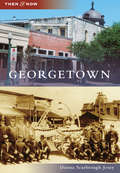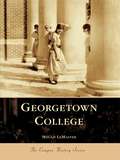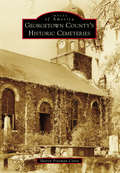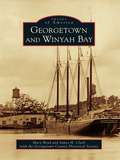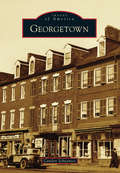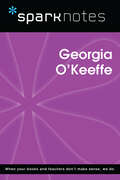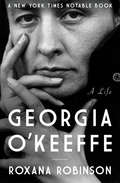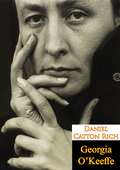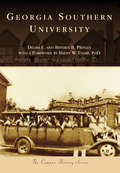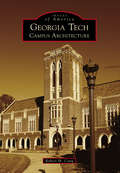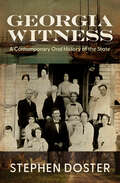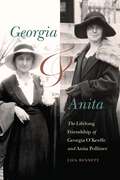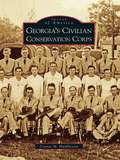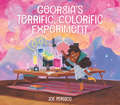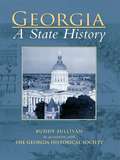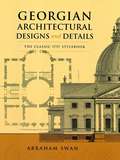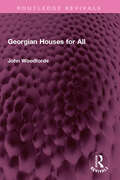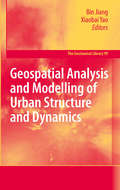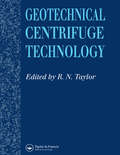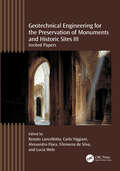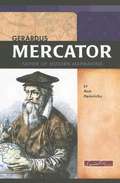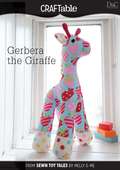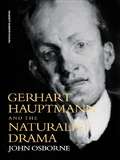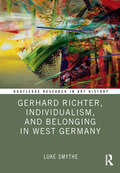- Table View
- List View
Georgetown (Then and Now)
by Donna Scarbrough JoseyFounded in 1848, Georgetown's development was driven by cattle, cotton, railroads, and education. Author and Georgetown native Donna Scarbrough Josey brings the city's history to life through this remarkable collection of vintage photographs from the Georgetown Heritage Society, Williamson County Sun newspaper, Southwestern University, and private collections. Readers will explore the beautifully restored courthouse square, a railroad district revived for the 21st century, the oldest neighborhoods, Southwestern University, and storied places along the San Gabriel River.
Georgetown College (Campus History)
by Megan LemasterThe mighty columns of historic Giddings Hall reflect the rich traditions of Georgetown College. With ties stretching back to 1787, Georgetown College offers a liberal arts education "providing students with a climate for achievement with aChristian context." As the first Baptist college west of the Allegehenies, the school survived not only the turmoil of war but also a devastating fire in the midst of economic depression. Because of the faith and endurance of dedicated trustees, faculty, and local citizens, Georgetown College developed into an institution that celebrates alegacy of scholarship and Christian principles. This volume's nostalgic photographs and recent snapshots highlight Georgetown's worlds of academia, athletics, student life, and religious activity.
Georgetown County's Historic Cemeteries (Images of America)
by Sharon Freeman CoreyGeorgetown is the third-oldest city in the state of South Carolina and the county seat of Georgetown County. Named for King George III of England, Georgetown County lies on the Atlantic Ocean surrounding Winyah Bay. The county's rivers--Santee, Sampit, Black, Pee Dee, and Waccamaw--were named by the Native Americans who were the area's first inhabitants. In 1732, the land was settled by the English, French, and Scots. Their first staple crop was indigo, but rice soon became the indisputable king of the Lowcountry and flourished in the marshes along the banks of the county's many rivers, creeks, and bays. By 1850, the county contained more than 175 rice plantations. The plantation era ended with the Civil War, the loss of enslaved labor, and a series of devastating hurricanes. Georgetown County's history will forever remain a part of the live oaks and Spanish moss found throughout the county and is retold in every cemetery within Images of America: Georgetown County's Historic Cemeteries.
Georgetown and Winyah Bay
by James H. Clark Mary Boyd Georgetown County Historical SocietyGeorgetown lies just inland of the Atlantic Ocean at the upper reaches of Winyah Bay. For eons, five rivers have flowed through the countryside, offering lifeblood to a town and its people. Founded in 1729, Georgetown has seen the heights of prosperity in the indigo and rice crops and the depths of despair in the aftermath of the Civil War. Many famous names have connections here, such as Francis Marion, better known as the Swamp Fox; the Marquis de Lafayette; Thomas Lynch, a signer of the Declaration of Independence; and Vice Pres. Aaron Burr, just to name a few. Presidents and other dignitaries have visited with us over these 200-plus years and millions have luxuriated in the waters of our nearby beaches for generations.
Georgetown: Scoundrels, Sinners And Spies (Images of America)
by Canden SchwantesGeorgetown, a thriving neighborhood in the nation's capital, was established in 1751 as an independent city. As the land to its east was being developed into Washington, DC, the once sleepy river town grew and evolved. George Washington's adopted descendants lived down the street from where Kennedy lived before Camelot; Julia Child walked past the home of Robert Todd Lincoln; and a successful community of free black Americans was built around the corner from what had previously been a slave market. Georgetown depicts the history of a community whose roots span far beyond the prestigious university and upper-class neighborhood for which it is known. The images capture mansions and slums, thriving businesses and crumbling facades, an industrial revolution, and the closing of the C&O Canal.
Georgia O'Keeffe (SparkNotes Biography Guide)
by SparkNotesGeorgia O'Keeffe (SparkNotes Biography Guide) Making the reading experience fun! SparkNotes Biography Guides examine the lives of historical luminaries, from Alexander the Great to Virginia Woolf. Each biography guide includes:An examination of the historical context in which the person lived A summary of the person&’s life and achievements A glossary of important terms, people, and events An in-depth look at the key epochs in the person&’s career Study questions and essay topics A review test Suggestions for further reading Whether you&’re a student of history or just a student cramming for a history exam, SparkNotes Biography guides are a reliable, thorough, and readable resource.
Georgia O'Keeffe: A Life (Biografia Circe Ser.)
by Roxana RobinsonA New York Times Notable Book: Roxana Robinson's definitive biography of Georgia O'Keeffe is a rich and revealing portrait of the iconic American artist. Artist Georgia O'Keeffe was born into a family of strong Midwestern farmwomen and taught self-reliance at an early age. Coming of age in the modern era, she went on to defy the social conventions of her time and lead a successful and emancipated life full of creativity, feminism, and austerity that has taken on mythic proportion. Roxana Robinson's multilayered book explores O'Keeffe's journey to personal and professional independence, the evolution of her art, and her most influential relationships. Written with the cooperation of O'Keeffe's family, and using sources unavailable during her lifetime, this biography presents the artist's own voice through her letters to family and friends. Robinson follows O'Keeffe from her childhood on a Wisconsin farm to the center of the New York art scene where she met her husband, photographer Alfred Stieglitz. Stieglitz championed O'Keeffe, exhibiting her work at his gallery and drawing her into his inner circle of early modernists. But O'Keeffe, ever caught between the demands of love and art, left New York to find inspiration in the New Mexico desert where she created some of her most renowned work. This vividly rendered, beautifully written account succeeds in capturing the passions, controversies, and contradictions in the life of an extraordinary woman.
Georgia O’Keeffe
by Daniel Catton RichThis is the definitive book on Georgia O'Keeffe's work--selected, designed, and supervised by the artist herself, with her own text. It includes 108 magnificent full-color plates, some never reproduced elsewhere or publicly shown, and spans O'Keeffe's entire career: from her intense, personal abstractions to her unique depictions of nature--flowers, bones, rocks, and landscapes.
Georgia Southern University
by Brent Tharp Delma E. Presley Beverly B. PresleyIn 1906, the founders of what would become Georgia Southern University pledged to build a college that would prepare students to succeed in a changing world. The First District Agricultural and Mechanical School served well the needs of women and men who lived in a farm-based economy. As the 20th century unfolded, the college did something that is rare in the history of higher education: it changed its name five times to meet the educational needs of its citizens. A university since 1990, Georgia Southern provides opportunities for a diverse and inclusive student body that now exceeds 20,000. Each year, graduates earn diplomas at the bachelors, masters, and doctoral levels. Today, the road to the future begins on a path that learners long have traveled: it leads up through a green forest to Sweetheart Circle. Old A&M has become one of the nation's distinctive universities. Those who study and teach here say the campus is the most beautiful in America. At its heart is a pair of neatly coupled lakes, framed by historic willows, live oaks, and stately pines. The light of learning still shines brightly from Statesboro's highest hill.
Georgia Tech: Campus Architecture (Images of America)
by Robert M. CraigThe architectural development of Georgia Tech began as a core of Victorian-era buildings sited around a campus green and Tech Tower. During the subsequent Beaux-Arts era, designers (who were also members of the architecture faculty) added traditionally styled buildings, with many of them in a pseudo-Jacobean collegiate redbrick style. Early Modernist Paul Heffernan led an architectural revolution in his academic village of functionalist buildings on campus--an aesthetic that inspired additional International Style campus buildings. Formalist, Brutalist, and Post-Modern architecture followed, and when Georgia Tech was selected as the Olympic Village for the 1996 Summer Olympics, new residence halls were added to the campus. Between 1994 and 2008, Georgia Tech president G. Wayne Clough stewarded over $1 billion in capital improvements at the school, notably engaging midtown Atlanta with the development of Technology Square. The landscape design by recent campus planners is especially noteworthy, featuring a purposeful designation of open spaces, accommodations for pedestrian perambulations, and public art. What might have developed into a prosaic assemblage of academic and research buildings has instead evolved into a remarkably competent assemblage of aesthetically pleasing architecture.
Georgia Witness: A Contemporary Oral History of the State
by Stephen DosterDrawing on the voices of residents from across the state, this oral history reflects on life in Georgia as it evolved throughout the twentieth century. Author Stephen Doster grew up on St. Simons Island, one of Georgia&’s Golden Isles. He began interviewing fellow island residents and captured their personal histories in the book Voices from St. Simons. Now, Doster has expanded the scope of his work to encompass the entire state of Georgia. In Georgia Witness, Doster records the stories of residents from all across the state, capturing the unique life and history of its many communities. Here are the voices of influential figures and ordinary residents, individuals of varying backgrounds and ethnicities, all of whom remember and contribute to the legacy and lifeblood of the peach state.
Georgia and Anita: The Lifelong Friendship of Georgia O'Keeffe and Anita Pollitzer
by Liza BennettGeorgia O&’Keeffe knew as soon as she met Anita Pollitzer that they had nothing in common. Anita looked like a china doll, small boned and delicate, and obviously well-to-do in her fashionable tunics and hobble skirts. She had the kind of mouth that settled naturally into a smile, which irritated O&’Keeffe, who had no time for dewy-eyed girls. Yet this first impression was the beginning of a lifelong friendship that had a tremendous impact on both women and on twentieth-century America. In Georgia and Anita Liza Bennett tells the little-known story of their enduring friendship and its ultimately tragic arc. It was Pollitzer who first showed O&’Keeffe&’s work to family friend and mentor Alfred Stieglitz, the world-famous photographer whose 291 Gallery in New York City was the epicenter of the modern art world. While O&’Keeffe, Stieglitz, and their circle of friends were at the forefront of American modernism, Pollitzer became a leader of the National Woman&’s Party and was instrumental in the passage of the Nineteenth Amendment, guaranteeing women the right to vote. Based on extensive research, including their fifty-year correspondence, Georgia and Anita casts light on the friendship of these two women who, in different ways, helped to modernize the world and women&’s roles in it. For more information about Georgia and Anita, visit georgiaandanita.com.
Georgia's Bones
by Jen BryantGrowing up on a Wisconsin farm, Georgia O'Keeffe began gathering all sorts of objects — sticks and stones, flowers and bones. Although she was teased for her interest in unique shapes and sizes, young Georgia declared: “Someday, I’m going to be an artist” — and that is exactly what she became. Jen Bryant’s story of Georgia O’Keeffe celebrates the famous artist’s fascination with natural shapes, “common objects,” and her unusual way of looking at the world. Bethanne Andersen’s fluid, graceful illustrations capture the beauty of O’Keeffe’s work and spirit.
Georgia's Civilian Conservation Corps
by Connie M. HuddlestonAt a time when our country struggled with a deep financial depression, the United States began to see incredible numbers of men and women who could not find work. During the first days of his administration, Pres. Franklin D. Roosevelt sought to create opportunities for this country's uneducated and undereducated young men to find work, help support their families, and receive training in a variety of fields. President Roosevelt's own vision brought about the Civilian Conservation Corps (CCC). Images of America: Georgia's Civilian Conservation Corps examines the role these young men played in developing three national forests, three national monuments, a national battlefield, 10 state parks, and four military installations. This book illustrates and gives voice to the CCC's rich contribution to Georgia's landscape and history and allows us to understand how the creation of this social employment program was once seen as the shining example of FDR's New Deal.
Georgia's Terrific, Colorific Experiment
by Zoe PersicoScience and art come together in this colorful and empowering picture book about a strong minded girl scientist and her artist family. Is it possible for science and art to really mix?Georgia wants to be a scientist, and a great one at that. But in order become a great scientist, she must first create her own, unique experiment. Her mother, father, grandma, and brother all want to help, but they're artists. How could they possibly help her with science? Everyone knows art and science just don't go together!As Georgia struggles to create her unique experiment, she eventually learns that sometimes science, too, can be a work of art.
Georgia: A State History (The\making Of America Ser.)
by Buddy Sullivan Georgia Historical SocietyGeorgia's past has diverged from the nation's and given the state and its people a distinctive culture and character. Some of the best, and the worst, aspects of American and Southern history can be found in the story of what is arguably the most important state in the South. Yet just as clearly Georgia has not always followed the road traveled by the rest of the nation and the region. Explaining the common and divergent paths that make us who we are is one reason the Georgia Historical Society has collaborated with Buddy Sullivan and Arcadia Publishing to produce Georgia: A State History, the first full-length history of the state produced in nearly a generation. Sullivan's lively account draws upon the vast archival and photographic collections of the Georgia Historical Society to trace the development of Georgia's politics, economy, and society and relates the stories of the people, both great and small, who shaped our destiny. This book opens a window on our rich and sometimes tragic past and reveals to all of us the fascinating complexity of what it means to be a Georgian.
Georgian Architectural Designs and Details: The Classic 1757 Stylebook
by Abraham SwanAmong the 18th century's most influential architectural designers and writers, Abraham Swan defined many conventions of English rococo detail. This reprint of an extremely rare and classic stylebook, compiled by the English architect nearly 250 years ago, provides outstanding examples of Palladian and Georgian architecture and design in colonial America and England.Included are floor plans, detailed elevations, and drawings for cornices, mouldings, and other decorative elements that demonstrate Swan's unique style. Designed, in his words, more for "Gentlemen of moderate Fortunes than of great Estates who may be inclined to build Houses," Swan's designs featured such aesthetic touches as double staircases, elegant entryways, and two or three floors with spacious galleries, salons, and dressing rooms.Invaluable to architectural historians and designers, this splendid stylebook will delight devotees of early English Georgian and American domestic architecture and interior design, cultural historians, artists, and craftworkers.
Georgian Houses for All (Routledge Revivals)
by John WoodfordeFirst published in 1978, Georgian Houses for All describes how little Gregorian houses came into being and how the original inhabitants used them. Gregorian houses at their smallest and simplest can be seen everywhere in the British Isles – detached, semi-detached and joined together in terraces. There are probably still over a million of them, built during a period of 130 years without the direct aid of architects. John Woodforde points out that an instinctive wish for a symmetrical front seems to be shown by young children’s drawings of houses, these being generally balanced and orderly. The Georgians’ love of symmetry, marked in their way of hanging pictures, was part of a desire for private order amongst public disorder, a desire to have one small sphere in which nature was fully controlled. John Woodforde reminds us that, in the present-day return to terrace-house building, the Georgian version remains a valuable guide. The book will be of interest to students of architecture, urban planning, and history.
Geospatial Analysis and Modelling of Urban Structure and Dynamics
by Bin Jiang Xiaobai YaoThe increasingly urbanized world has created various problems of environment, climate, consumption of resources, and public health, which are closely linked to the side-effects of urbanization such as sprawl, congestion, housing affordability and loss of open space. Fundamental to the urban problems are two separate yet related issues: urban structure and urban dynamics. The chapters collected in this book present an excellent profile of the current state of geospatial analysis and modelling, and demonstrate how these approaches can contribute to the study of various urban issues. The book addresses key themes including new ways of capturing data digitally at the individual level, the development of systems based around networks, the notion of linking hierarchy to networks to morphology as in complexity theory, and the development of new ways of integrating diverse urban processes through simulation paying careful attention to the basic econometric and statistical principles of spatial analysis. With a foreword by Michael Batty and an epilog by Michael F. Goodchild.
Geotechnical Centrifuge Technology
by R. N. TaylorThis book provides a thorough review of this powerful and sophisticated technique for modelling soil structure interactions. It has been written by an international team of authors.
Geotechnical Engineering for the Preservation of Monuments and Historic Sites III: Invited papers
by Renato LancellottaThis book contains the invited lectures presented at the 3th International Symposium on Geotechnical Engineering for the Preservation of Monuments and Historic Sites (IS NAPOLI 2022, Naples, Italy, 22-24 June 2022). It collects the opening address, the third Kerisel Lecture, four keynote lectures and eleven panel lectures, and provides a broad impression of 1. the current state of knowledge and 2. the techniques used worldwide for the preservation of built heritage. When confronted with structures relevant to local and global history, there is only one way to select the best possible conservation solution: the multidisciplinary approach. Therefore, the invited speakers have been selected with different pertinent skills, to represent this complexity from the points of view of geotechnical engineers, structural engineers, architects and conservation experts. The book will be useful to researchers, practitioners, administrations and all those working or interested in the preservation of built heritage.
Gerardus Mercator: Father of Modern Mapmaking
by Ann HeinrichsMercator was destined to be one of the most famous mapmakers in history. Before his time, many maps were as much about myths as geographical reality, filled with exotic creatures and fabled lands. But he turned cartography, or map-making, into a science. He based his maps on firsthand reports, using mathematical calculations whenever possible to pinpoint locations.
Gerbera the Giraffe
by Me MellyCats are well known for their curiosity, but giraffes? This pretty, prancing giraffe certainly has an inquisitive side to her nature, although she can be a bit jumpy and bound off if things go horribly wrong as a consequence of her investigations. Simple gathering is used to good effect here in creating Gerbera's frilly mane and attractively shaped ears. She may be spotted like her wild cousins, but her cover is easily blown with her coat of a heady mix of bright colours and patterns.
Gerhard Hauptmann and the Naturalist Drama
by John OsborneWhat was German Naturalism? What were its achievements? How does it compare with its counterparts in other European countries? These are some of the difficult questions addressed by John Osborne in Gerhart Hauptmann and the Naturalist Drama, a revised and updated version of his The Naturalist Drama in Germany, now widely acknowledged as the standard introduction to the subject. The debates to which he contributed, and in some cases initiated, on Naturalism in the German theatre, Naturalist theory in Germany, and the development of the Naturalist movement to the contemporary Social Democrat movement, have remained central issues. This revised edition preserves the structure and approach of the original, including its emphasis on the early dramas of Hauptmann, while taking full account of subsequent scholarship which provides the context in which this Naturalist playwright's work can be placed.
Gerhard Richter, Individualism, and Belonging in West Germany (Routledge Research in Art History)
by Luke SmytheThis book reevaluates the art of Gerhard Richter (b. 1932) in relation to his efforts to achieve belonging in the face of West Germany’s increasing individualism between the 1960s and the 1990s. Richter fled East Germany in 1961 to escape the constraints of socialist collectivism. His varied and extensive output in the West attests to his greater freedom under capitalism, but also to his struggles with belonging in a highly individualised society, a problem he was far from alone in facing. The dynamic of increasing individualism has been closely examined by sociologists, but has yet to be employed as a framework for understanding broader trends in recent German art history. Rather than critique this development from a socialist perspective or experiment with new communal structures like a number of his colleagues, Richter sought and found security in traditional modes of bourgeois collectivity, like the family, religion, painting and the democratic capitalist state. The book will be of interest to scholars working in art history as well as German history, culture and politics.
